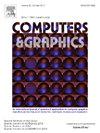基础模型辅助视觉分析:机遇与挑战
IF 2.8
4区 计算机科学
Q2 COMPUTER SCIENCE, SOFTWARE ENGINEERING
引用次数: 0
摘要
我们探索了通过直观的自然语言交互将大型语言模型(llm)和多模态llm (mllm)等基础模型集成到视觉分析(VA)系统中。我们调查了这个新兴领域的当前研究方向,研究了基础模型如何已经集成到可视化相关的关键过程中:可视化映射,数据可视化的创建;观想观察,通过观想产生发现的过程;以及可视化操作,改变视口或突出显示可视化中感兴趣的区域。我们还强调了基础模型为可视化带来的新可能性,特别是使用mlm直接解释可视化、集成多模态交互以及为用户提供指导的机会。最后,我们总结了未来的VA系统作为分析和解决通过基础模型实现这一愿景的突出挑战的合作伙伴的愿景。我们在本文中的讨论旨在指导未来研究人员在基础模型辅助VA系统的工作,并帮助他们在开发这些系统时克服常见障碍。本文章由计算机程序翻译,如有差异,请以英文原文为准。

Foundation model assisted visual analytics: Opportunities and Challenges
We explore the integration of foundation models, such as large language models (LLMs) and multimodal LLMs (MLLMs), into visual analytics (VA) systems through intuitive natural language interactions. We survey current research directions in this emerging field, examining how foundation models have already been integrated into key visualisation-related processes in VA: visual mapping, the creation of data visualisations; visualisation observation, the process of generating a finding through visualisation; and visualisation manipulation, changing the viewport or highlighting areas of interest within a visualisation. We also highlight new possibilities that foundation models bring to VA, in particular, the opportunities to use MLLMs to interpret visualisations directly, to integrate multimodal interactions, and to provide guidance to users. We finally conclude with a vision of future VA systems as collaborative partners in analysis and address the prominent challenges in realising this vision through foundation models. Our discussions in this paper aim to guide future researchers working on foundation model assisted VA systems and help them navigate common obstacles when developing these systems.
求助全文
通过发布文献求助,成功后即可免费获取论文全文。
去求助
来源期刊

Computers & Graphics-Uk
工程技术-计算机:软件工程
CiteScore
5.30
自引率
12.00%
发文量
173
审稿时长
38 days
期刊介绍:
Computers & Graphics is dedicated to disseminate information on research and applications of computer graphics (CG) techniques. The journal encourages articles on:
1. Research and applications of interactive computer graphics. We are particularly interested in novel interaction techniques and applications of CG to problem domains.
2. State-of-the-art papers on late-breaking, cutting-edge research on CG.
3. Information on innovative uses of graphics principles and technologies.
4. Tutorial papers on both teaching CG principles and innovative uses of CG in education.
 求助内容:
求助内容: 应助结果提醒方式:
应助结果提醒方式:


